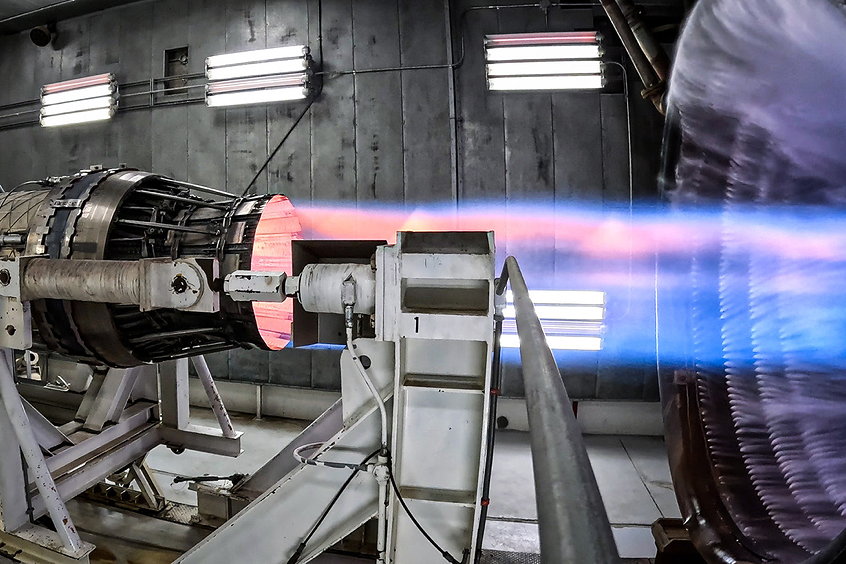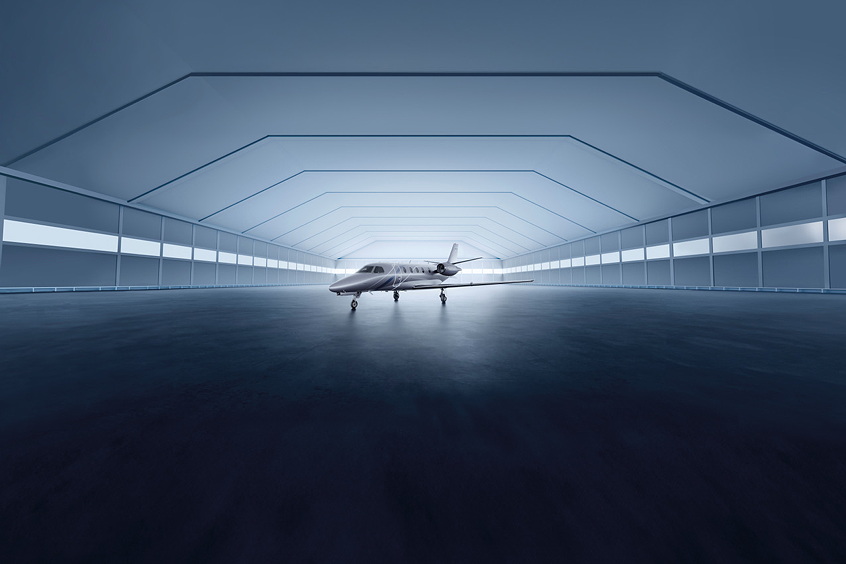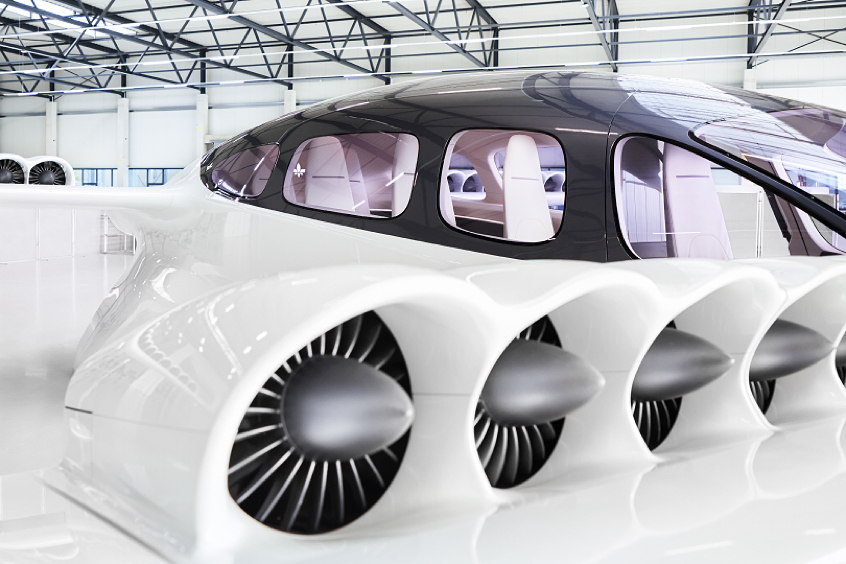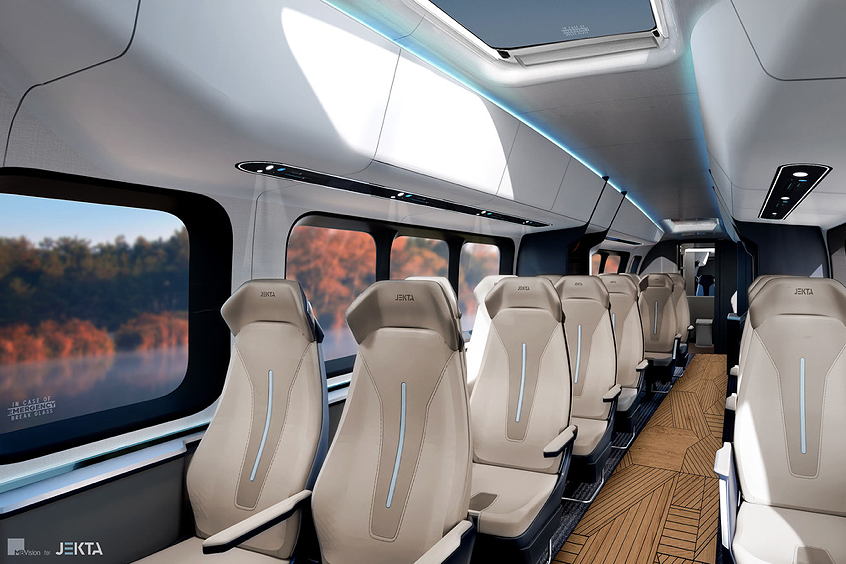At a press conference today Richard Lugg the Chairman of HyperMach Aerospace Ltd announced the latest developments for the revolutionary new Business Jet - SonicStar. HyperMach's new aircraft SonicStar incorporates revolutionary aerodynamics and propulsion technology to overcome the environmental and economic challenges that have stopped the development of supersonic aircraft in the past. Richard Lugg announced today that recent analysis of data shows SonicStar is capable of achieving the speed of Mach 4.0, while meeting requirements for high thrust to weight ratio engine designs, reduced emissions and the dramatic reduction of sonic boom overland.
Richard Lugg said 'Since partnering with Eagle Harbor Technologies at the Paris Airshow in June 2011 HyperMach and Eagle Harbor have completed critical data analysis. Eagle Harbor have integrated their plasma and aerodynamic codes into the HyperMach / Aeronautical Testing Service Inc aerodynamic model of SonicStar and generated an initial simulation showing that it is possible to manage the shock wave at the bow of the aircraft.' As vehicles travel beyond the speed of sound, a bow shock forms and these shocks cause increased drag, sonic boom and high temperatures & pressures. The solution is to inject plasma to rapidly heat an extended path ahead of the shock wave. A long, hot, low-density core is created through the rapid expansion of the hot plasma. The vehicle's bow shock expands into the core, followed by the vehicle itself. The shock bows as the core provides a route for the high pressure front to escape around the vehicle, reducing the shock strength.
The benefits of Plasma Aerodynamics are: shock wave mitigation, drag reduction of up to 90% and plasma steering (the vehicle will preferentially fly along the low density channel). Fuel efficiency is increased (by 10:1 return ratio) and there is a reduction in the requirement for heat-resistant critical surfaces and components. It is possible to create faster, more durable and more maneuverable systems designed around the payload and most importantly achieve a reduction in the impact of sonic-boom.
Richard Lugg previously commented in Paris 'I've made it my life's work to make this dream a reality. Now, in 2011, we have access to revolutionary engine technology, and a unique, very high speed aircraft design to make this kind of earth-shatteringly fast air travel possible.' He added today 'The support of key industry partnerships are enabling the SonicStar project to progress at Hypersonic speed!'
HyperMach was excited today to announce a new industry partner Numeca International whose ground breaking work in numerical simulations has the potential to transform the HyperMach programme.
Advances in commercial and military aerospace technology and know-how are continually accelerating and Computational Fluid Dynamics (CFD) has been at the forefront of this progression. Expanding accessibility to affordable, high power computing and the advancement of CFD codes have made optimization simulations of cruise, take-off and landing aerodynamics readably accessible. Complex computational investigations span both external configurations—aeroacoustic, thermal and fluid structure interaction predictions, ground vortex phenomena--and internal configurations—engine intakes, heat radiation and convection to walls, pollutant formation, engine combustion.
The dramatic growth of CFD within the aerospace industry has also brought attention to difficulties in modeling complex flow phenomena and the compromises that remain between physical accuracy and numerical limitations. Numeca Int. are experts
in flow regimes from subsonic to hypersonic; in advanced simulations of engine components, including optimization and related risk assessments; as well as the integration of acoustic and aerothermodynamic heating within the CFD codes.
Aerodynamic design software should also encompass modeling efforts in noise reduction, primarily related to landing gear and wing flaps; efforts that can conflict with aerodynamic optimization and remain difficult to achieve. CFD analysis has proven to be a crucial research, development and design tool in the aerospace industry bringing greater insight into the physics of flow, while reducing costs and turnaround time.
Richard Lugg described today how the continuing development of the S-MAGJET engine has led to the expansion and development of the engine technology creating the planned Hypersonic derivative, named H-MAGJET. In partnership with SonicBlue
the company has reevaluated the compressor and fan design, further optimizing its performance for faster speeds. This includes work on the combustor and the fan turbine core. Hypermach are planning to develop and build the engine in the UK.
The UK Department of Trade and Industry have agreed to support the company in the UK, as we establish and grow the strategic Global Headquarters for the commercial engine development. HyperMach have put revolutionary green engine technology at
the heart of SonicStar's development. This next generation hybrid electric gas turbine engine has the ability to reduce jet emissions, increase thrust to weight ratio and reduce parts count in core engine components.
The first flight of SonicStar is set for 2021 and HyperMach Aerospace Ltd has a number of investment opportunities available for individuals who wish to play a personal part in aviation history. HyperMach is seeking private investors interested in sharing this adventure.
| Contact details from our directory: |
Weekly news by email:
See the latest Bulletin, and sign up free‑of‑charge for future editions.

Hermeus begins precooler testing with P&W F100 engine

Citation Ascend programme advances with certification tests and flight testing

Lilium to expand industrial footprint in France
